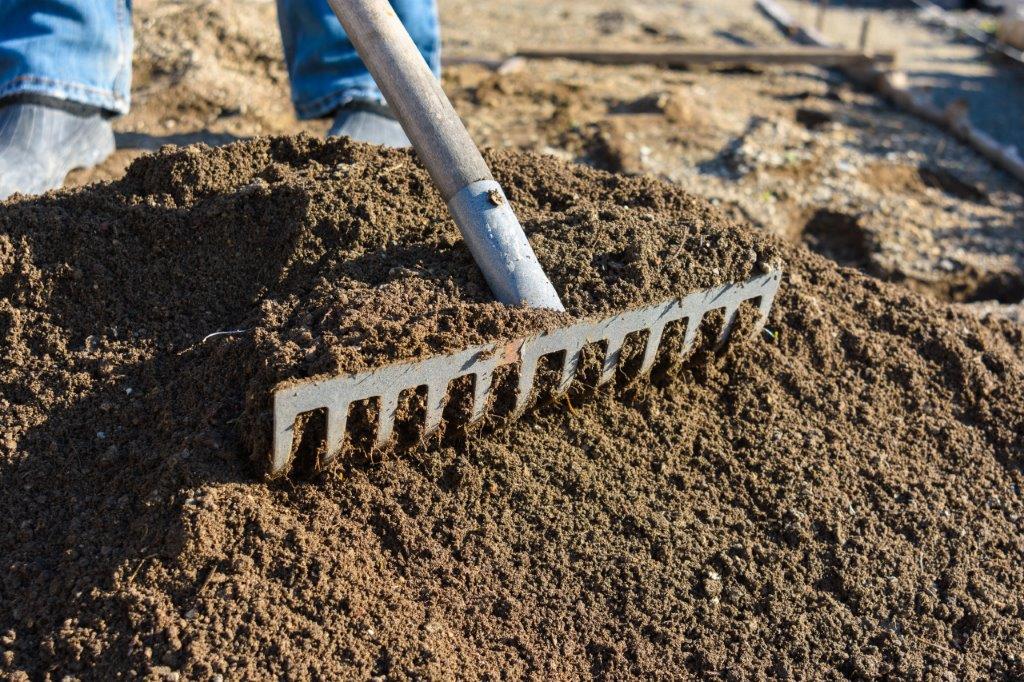Why use Sandy Loam when establishing a new lawn?
Author: Stefan Palm Date Posted: 14 February 2024
When preparing an area for a new lawn, you'll often hear people talking about Sandy Loam as being the best choice of topsoil for your project. In this blog, I'll talk about why this is so.
last week, I talked about the importance of maintaining a neutral soil pH to ensure a healthy and good-looking lawn. As most gardeners will know, focusing on the soil is critically important in getting the results you want in your lawn and garden.
Following on from that, I’d like to talk about how you go about preparing soil for a new lawn, more specifically, what you’re looking for in the topsoil you use. In rummaging around the internet looking for advice on this topic, you’ll soon discover that most people recommend sandy loam as a good base for lawns. If you were to go down to a landscape supply yard and have a close look at sandy loam, you’d notice that it's light-coloured and very sandy – and that’s because it is. In most cases, 60-80% sand.
While some people will accept this as OK, other more curious folk will want to challenge the idea that it’s right to lay a lawn on virtual sand - after all, you wouldn’t think a sandy soil would hold water well.

So why do people in the know recommend sandy loam as a good base for lawns?
Let’s start with the premise that:
Lawns grow best when they have at least 100mm of good-quality topsoil under them. When I say good quality, that means soil that doesn't set hard, is freely draining, accepts and holds water and is commonly a combination of sand, loam and organic material. In ensuring this, you’ll give your lawn the best chance to grow deep and healthy roots, which are essential to a healthy and good-looking lawn.
There are often times when the existing soil on your property is perfectly fine to lay turf on. There are also times when it is not OK, for example, in instances where your existing soil is boggy, sets hard, repels water or is rocky or shallow. In these circumstances, you may have to bring in some extra, and that’s where sandy loam comes in.
Sandy loam is a soil type that strikes a perfect balance between sand, silt, and clay particles. Remember, it’s not just sand – It has a loam component to it as well, which is why it’s renowned for its exceptional drainage properties, moisture retention capabilities, and nutrient-rich composition. Sandy loam soils are characterised by their loose, crumbly texture, which makes them easy to work with and perfect for supporting healthy root growth.
Advantages of Sandy Loam for New Lawns:
Superior Drainage:
One of the primary reasons sandy loam is favoured for new lawns is its excellent drainage capabilities. Unlike clay soils, which can become waterlogged and suffocate plant roots, sandy loam allows excess water to percolate through the soil quickly. This prevents waterlogging, reduces the risk of root rot, and ensures optimal oxygen levels for root development.
Adequate Moisture Retention:
While sandy soils are known for their drainage, sandy loam strikes the perfect balance by also retaining an adequate amount of moisture. The presence of silt and organic matter in sandy loam helps to hold onto water, ensuring that the soil remains moist enough to support healthy plant growth, even during periods of hot weather.
Enhanced Root Development:
Healthy roots are essential for a thriving lawn, and sandy loam provides an ideal environment for root development. The loose, well-aerated structure of sandy loam allows roots to penetrate deep into the soil, accessing essential nutrients and water. This results in stronger, more resilient grass plants that are better equipped to withstand environmental stresses and competition from weeds.
Easy to Work With:
From a practical standpoint, sandy loam is a joy to work with when establishing a new lawn. Its friable texture makes it easy to till, level, and amend with organic matter or fertilisers as needed. Whether you're seeding or laying turf, sandy loam provides a receptive substrate for planting, ensuring good seed-to-soil contact and promoting uniform germination and establishment.
How much should you apply?
The depth of the layer that you should apply will depend on a few factors related to the quality of the existing topsoil on the site. The most you'll need is a 100mm layer; however, there are often times when you'll need less. If you would like to get an opinion on your soil and how much topsoil you may need, bring a sample down to us at our store in Hove, and we'll let you know what (if anything) needs to be done.
Click here to read some handy tips and advice on the process of preparing your soil ready for instant turf. If you find that you have some questions that we don't cover, give us a call on 08 8298 0555 or send an email to me at info@paulmunnsinstantlawn.com.au


